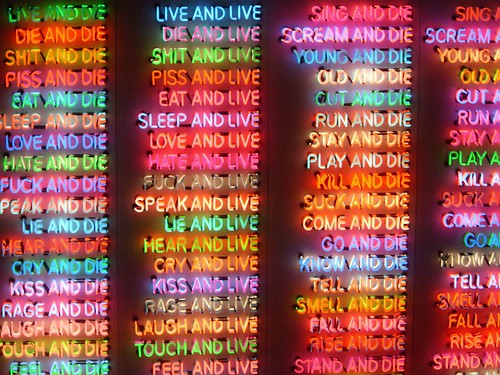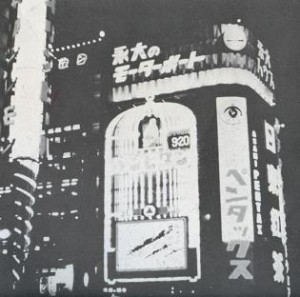
As a final post on flaneurship and neon lights in the city landscape, I chose to write about Bruce Nauman. This might seem confusing, because his works are usually displayed in a gallery or a museum, quite isolated from the busy city environment that was my starting point for the first post.
Nauman made some installations with neon light, some containing text, others consist of images only. I chose these three examples from the mid-eighties (One Hundred Live and Die, 1984, Seven Figures, 1984, Mean Clown Welcome, 1985) for the more or less brutal messages they communicate. I still don’t know what the medium neon in itself expresses. This needs a more elaborate research. I’ll try to give a short comparison between Nauman’s work and the neons in Vegas. Comparing these two types of neon signs arise questions about this romanticist (yet uncanny) idea of a flaneur who gets sucked into a dreamworld of lights in the city. The common divider between these works of Nauman and for instance the neon signs in Las Vegas is immediacy. Both types of signs are attacking the viewer, but the effects are parallel reversed to one another. Nauman plays with a system of repulsion, while in a competitive commercial context (such as Las Vegas), neon signs would rather be used to evoke attraction. Still, I think both have to do with desire.


cat.no. -naum-8
keyword: neon

